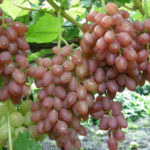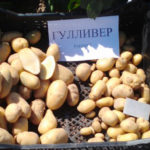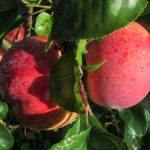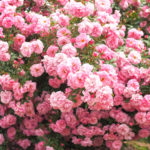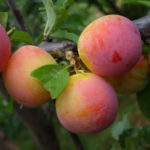Hydrangea paniculata Polar bear
Every lover of varietal plants can today choose a hydrangea for his garden that has the qualities he needs. One of the important indicators taken into account by most flower growers when buying a delicate beauty is the degree of cold resistance. In this, the Polar Bear variety has succeeded most of all. However, he already has many pleasant surprises for you.

History of creation
A variety with such an unusual name is a Dutch novelty that appeared thanks to the efforts of breeders five years ago. Experts obtained it by crossing two known varieties of panicle hydrangea: Limelight and Grandiflora. The first is famous for the pistachio color of flowers, which is replaced by a pink hue by autumn, as well as a high level of resistance to low air temperatures. The second type is characterized by the presence of incomparable large inflorescences, but has a significant drawback: the weakness of the shoots, breaking off under the weight of heavy flower caps. The new variety has absorbed the best from its parents and is completely devoid of their weaknesses. In the original, the name of our heroine sounds like Polar bear.
Description of appearance and features
The polar bear is a powerful ornamental shrub with a height of 1.5 to 2 meters, with strong, tough, straight shoots, which are not harmed by abundant flowering. The leaves of the culture are oblong, rich green color, which lasts until autumn. The cone-shaped inflorescences of hydrangea are dense, long (from 35 to 40 cm). They are stuffed with large sterile and small, rapidly falling fertile flowers. The diameter of sterile flowers is 3 cm or more. Initially, the inflorescences of the Dutch culture are sustained in pleasant pistachio tones. In the middle of the flowering phase, this shade is replaced by a snow-white color. By the end of this period, it becomes possible to admire the pale pink inflorescences. They are evenly distributed over the entire crown of the shrub, which gives the noble plant the image of a giant flower bouquet. Inflorescences appear on the shoots of the Polar Bear in the middle of summer, and fade only in late autumn.
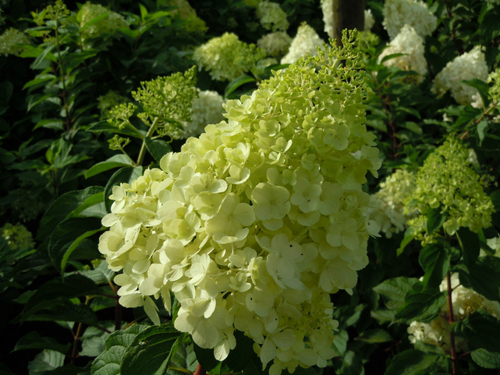
Features of the Polar bear variety:
- ability to withstand frosts down to -40 ° C;
- good immunity, making the hydrangea practically immune to various pests and diseases;
- recovery in a short time in the event of a freezing out of the shoots in the winter;
- undemanding care;
- The polar bear is a wonderful honey plant.
Growing recommendations
This type of panicle hydrangea is partial to sunlight. Given this feature, it is advisable to place the plant in that part of the garden where good illumination is maintained in the morning. In the afternoon, in the area with shrubs, partial shade should reign, which can be arranged artificially. Protect the crop from cold drafts - they provoke the appearance of diseases and slow down the growth of shoots. The plant can be planted both in spring and in autumn. In the second case, it is important to be in time before the start of frost, otherwise the bush may die. In addition, a crop planted in the garden in the fall needs good shelter.
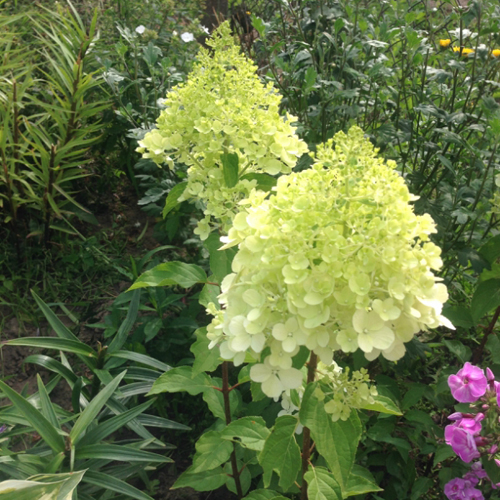
The best soil for Dutch hydrangea is acidified, with a high degree of fertility. If possible, plant the Polar Bear in black soil. The variety is also loyal to sandy loam soil, grows well on loam. To enrich the soil with nutrients, add humus, peat and mineral fertilizers to the hole.The recommended depth of the planting pit is 40-50 cm. To avoid stagnation of moisture at the bottom of the hole, a layer of pebbles or expanded clay is required. You will have to spend two days planting a plant. First, dig a hole and pour a couple of buckets of water into it. The next morning, add the nutrients, mix them with the soil. Plant the crop by spreading the roots and covering them with soil. After that, be sure to water the plant. Remember that hydrangeas cannot tolerate alkaline soils. In addition, plants of this variety must be planted at a sufficient distance from each other in order to provide each of them with normal air circulation and prevent crushing of the inflorescences.
The moisture-loving Polar bear needs regular watering, carried out at intervals of 1-3 times a week. Pour up to two liters of settled, not cold water under the bush. You can add potassium permanganate to it, achieving a weak solution - to protect the root system from rot. After watering, the soil around the Polar Bear should be loosened, and then mulched with peat, crushed pine bark. If you want to acidify the ground, use spruce needles. Culture and periodic weeding are necessary.
In order to form larger inflorescences in large numbers, the shrub should be fed. Since spring, organic fertilizers are applied under it, for example, mullein, nitrogen concentrate. At the stage of bud formation on the plant, mixtures rich in phosphorus, nitrogen and potassium are used for feeding. July is the time for the introduction of the mineral complex under the bush. In the fall, before the onset of cold weather, the blonde beauty is treated to a specialized fertilizer designed to feed hydrangeas.
An elegant shrub is subject to pruning without fail. This procedure is performed in the spring in order to thin out the dense crown. All weak, as well as dead and diseased shoots are removed, while strong branches are cut to five, at least three buds. For the winter, the Polar Bear is sheltered only if it is cultivated in regions with a harsh climate or where there is little snow in winter. A layer of peat is placed under the bush, the culture itself is insulated with straw or spruce branches. You can also sprinkle it with additional snow - this will enhance the heat preservation effect.
With strict adherence to recommendations for care and cultivation, diseases and insects rarely attack ornamental shrubs. But if this still happens, then the following problems make themselves felt: powdery mildew, tracheomycotic wilting, chlorosis, septoria, various types of rot, the appearance of snails, spider mites, nettle weevils, thrips. You need to deal with them with solutions of fungicides and insecticides, which are sprayed with hydrangea. If desired, you can apply such treatment for the purpose of prophylaxis three times during the warm season.
The polar bear is propagated by layering, dividing the rhizome, cuttings, and seeds. The second method is most widespread, since after pruning the crop, there are many shoots that are suitable for reproduction of the shrub in this way, and the implementation of this procedure will not cause any difficulties.
Use cases
Polar bear is a favorite element of landscape design. It is planted in parks, Japanese and English gardens, front gardens. Ornamental shrubs are often made a member of group compositions. It goes well with a variety of flowering perennials, including other types of hydrangeas. Mixborders with conifers and rhododendrons are placed under the culture. Bright flower beds will be appropriate next to the flower. Such plants, placed along the fence or wall of the house, look good, especially if maiden grapes, honeysuckle and other vines are planted between them. A holiday will come to your flower garden with the Polar Bear!

